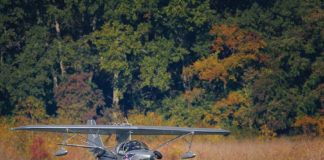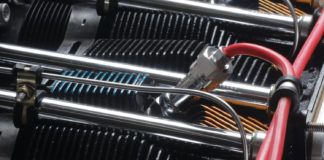The six most-feared words in Experimental aircraft building are: For sale, going a different route. I made a lot of mistakes and changes costing me both time and money. I bought three intercoms, four VHF com radios, two nav/coms, relays, switches, two center panels, even a fuel gauge that went away. So, in the hope that you don’t make the same mistakes I made, here are my 10 tips for building your panel:
1. Define your needs and wants. Needs are essential to your mission; wants are nice-to-haves for your plane. Needs are based on your 90% mission (your most common flying), your 9% mission (special trips), and the 1% mission (what happens when things go wrong). Wants get you bragging rights on the ramp and that cool feeling at 10,000 feet on a CAVU day. You should write down your needs and wants in two columns on a piece of paper. As your project progresses, you may see items switch columns or disappear completely. You may also get new items.
2. Start planning. Once you understand your needs and wants, research equipment options, features, and prices. If you are building an ultralight or a racing turbine, you still need to carefully plan your panel based on up-to-date information.
3. Set a budget. After gathering costs for equipment on your list, you will probably re-evaluate the needs and wants columns of your notes. A preliminary budget will create a realistic plan to proceed. A budget can make the difference between finishing your plane and selling your project for parts.
4. Avoid getting involved with obsolete equipment or vendors that are out of business. (I avoid the use of the word “never,” so I say avoid instead.)
5. Wait for Sun ‘n Fun or Oshkosh to purchase new avionics if possible. There is almost always a deal to be had.
6. Your panel should match your mission. Get pictures of a Piper Cub or Taylorcraft panel, then get pictures of the panel from the space shuttle or a 747. Understand how your mission will fall between these two extremes. Also remember that the FAA has a minimum equipment list for various classes of aircraft. See AC 91-67—Minimum Equipment Requirements for General Aviation Operations Under FAR Part 91.
7. Don’t be afraid of the future. The age of spinning discs and vacuum pumps is passing. Digital electronics have surpassed mechanical parts in both durability and reliability. Just because you can get some old steam gauges for a good price does not make them a bargain. Any spinning device (electrical or vacuum) will need inspection, evaluation, and maybe new bearings.
8. Wait as long as you can to purchase avionics. Modern avionics are riding on the coattails of digital electronics development. The same processors that go into smart phones and tablets are going into avionics. Be sure to have the best and brightest when your plane becomes airborne.
9. Be careful of used avionics. It might seem a bargain at first, but older equipment is costlier to repair, weighs more, and lacks many features of modern equipment.
10. Going forward, stay up to date on what is out there. The avionics world changes almost daily. Current knowledge is the best defense against waste of time and money.
When your project becomes airborne, your panel will be staring you in the face all the time. Be sure it meets your needs and has at least some of your wants. Me? I have a little Hobbs meter like the C-150 I learned to fly in. Cool.

![]()
David Boeshaar is a systems analyst for corporate Disney. A former mechanic, teacher, and computer help desk guru at a major university, he is now building a Van’s RV-9A for fun with his brother-in-law. As the new guy in aviation, Dave has learned lots, both good and expensive, and hopes to pass along a little help to the builders coming up behind him.






